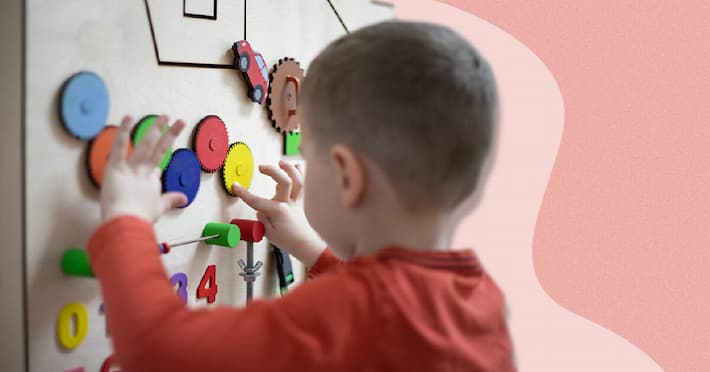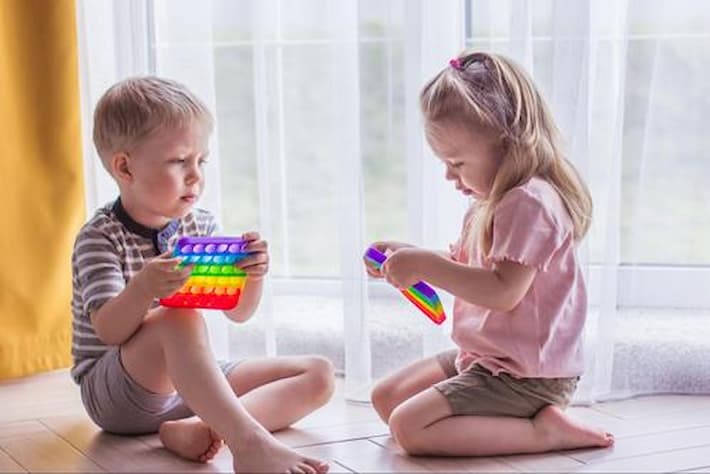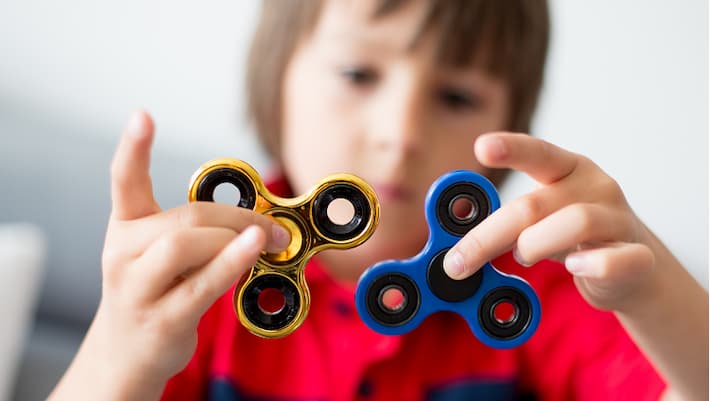Sensory play, or playtime which stimulates the use of the five main senses – touch, sight, hearing, taste, smell, is fun and beneficial for children of all ages. Sensory play helps them learn something new and this type of learning through play is how the brain learns to recognise and sort various things and sensations. It’s a great way to teach children to verbalise different feelings and help them learn the opposites, such as warm and cold, dry and wet and more.

There are many different sensory products for kids available to encourage sensory stimulation and development. Introducing the right toys into kids’ playtime is more important for their sensory development than you may think. Child development toys are dominating the market and with the advancement of educational toys and similar products, it’s no surprise that many parents are trying to find out more about the benefits of sensory toys.
These toys are created to help children who have a low or high sensory threshold and while most of them focus on taste, sight, hearing, taste and smell, some focus on body awareness and balance as well. You can choose from a wide range of sensory products for kids and help them learn about their senses through play.
Benefits of Sensory Toys for Kids
Most sensory toys are designed simply, but sensory play is limited only by your imaginations, with some common sense being used around the types of play appropriate for your child’s age. Sensory activities allow children to refine the threshold for different sensory information and can help them learn to block out the noise that is not important and focus on the play.

The desire to engage with sensory play comes naturally for children and should be encouraged and supported both at home and school. It can provide a lot of benefits for children development, including the following.
- Build nerve connections in the brain
- Encourage motor skills development
- Encourage problem-solving abilities
- Support language development
- To calm an overstimulated, anxious or frustrated child
Sensory Products as Therapeutic Aids
Play can help enhance childhood development in a variety of ways. But for children dealing with autism ADHD or sensory processing disorder (SPD), play may look a bit different. Sensory toys can help encourage play in children who are easily overstimulated or distracted by other kinds of kids’ toys.

A sensory toy is designed to stimulate one or more of the senses and can be helpful as a repeatable and predictable form of stimuli for children with autism and similar conditions, who crave structure and routine. No matter what’s going on in their environment, a kid can always rely on his or her toy to give them safe sensory feedback in a manageable way.
When setting up a sensory play area, make sure it’s flexible enough, so your child can move to different sensory toys when ready. You can use soft barriers, such as decorative cushions, for instance, to separate each sensory toy play area.
How to Choose Sensory Toys for Kids
Sensory toys come in a variety of different forms and all of them are designed to engage a child’s attention both physically and cognitively by stimulating one or more of the five senses.
Touch
All materials are essentially tactile, but the form and finish of children’s toys can vary considerably, from soft and fluffy materials to hard and bumpy. Squishy sensory toys allow your child to gain a concept of the sense of touch in a new and fun way.
Sight
Toys with vibrant colours and contrasts can captivate a child’s attention and stimulate visual interest.
Hearing
Some sensory products make a noise, which can help to support auditory engagement. Those sounds may be bells, whistles, rustling, crinkling or else.
Taste
Toys that provide pleasant tastes may include teething rings or other similar toys.
Smell
Certain aromas can stimulate the sense of smell, which can provoke curiosity.
Depending on your child’s needs and interests, you can choose sensory toys and here are some of the most commonly used ones.
Fidget Spinners

We’ve all heard about fidget spinners as they were the latest craze a few years back. They can help children focus by keeping their hands occupied. Fidget spinners are fun for most children because of their smooth and fast rotation. They are available in many different designs and colours, so you can choose one that your child will love.
Chew Toys
Chew toys are very common, especially when children are teething, but they can be used for children with autism as well. These toys are made of a non-toxic silicone material and can be hand-held or worn around the neck or wrist. They are available in different textures, including ridges, patterns, dots or else. Their purpose is to develop biting and chewing skills and provide sensory stimulation, too.
Sand, Slime, or Putty
These toys allow kids to play and develop fine motor skills at the same time. Usually, the substances are often brightly coloured, appealing to children’s visual senses. They can play with the substance or incorporate other objects.
Sensory Mats
Sensory mats are small mats that utilise different textures. Children can use their hands or feet to feel the different types of textures and play with them.
In the end, it’s up to the parents to decide when to start sensory play, but as you can see from the above, the sooner the better. Children love to engage their senses and explore the world around them, but more importantly, sensory play is beneficial for their development.



